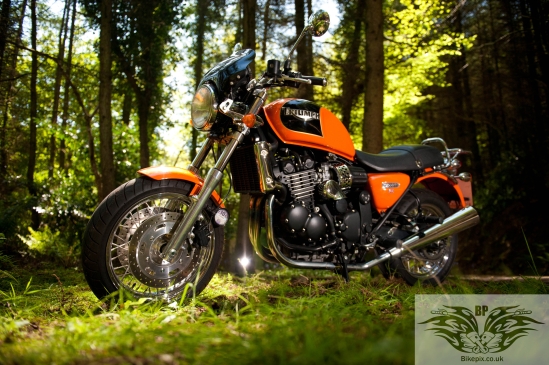
Triumph Bonnieville 2012 SE
Todays project was to photograph this Triumph Bonneville SE on Paignton seafront.
I was lucky in that some canoeists came along at just the right time and with careful composition, I was able to include all three into the background of the photo.
The ambient lighting for the original photograph was a bit drab and I used a single fill flash to pick out some of the bikes detail. The background was slightly underexposed using a faster shutter speed on camera manual setting.
Once the photo was being edited, the colour cast was warmed up by adding a digital daylight filter. Colour contrast was increased and the glinting sun was added using the lens flare filter in Photoshop. Overall brightness was increased and then a graduated filter was added to stop the sky overexposing.

Here is the original photograph before editing, which shows how the early evening light was quite drab and uninteresting due to cloud cover. Also the flash lighting was horrible as it was used on the camera, the worst possible place as that produces ‘flat lighting’.
I was travelling light and had just packed the camera and a single flash gun into the travel bag. So all things considered, it was not a pleasing picture to start out with. There was also some damp marks showing on the floor which were distracting to the eye, but there were cars parked tight either side and so I had limited room to work with. The darker marks on the floor were removed in Photoshop; the sort of post production editing I normally try to avoid as I prefer to ‘get it right’ in camera whenever possible.
On this occasion, it was the editing that saved the day; turning a rather dull photograph into something with ‘visual punch’ and interest.











